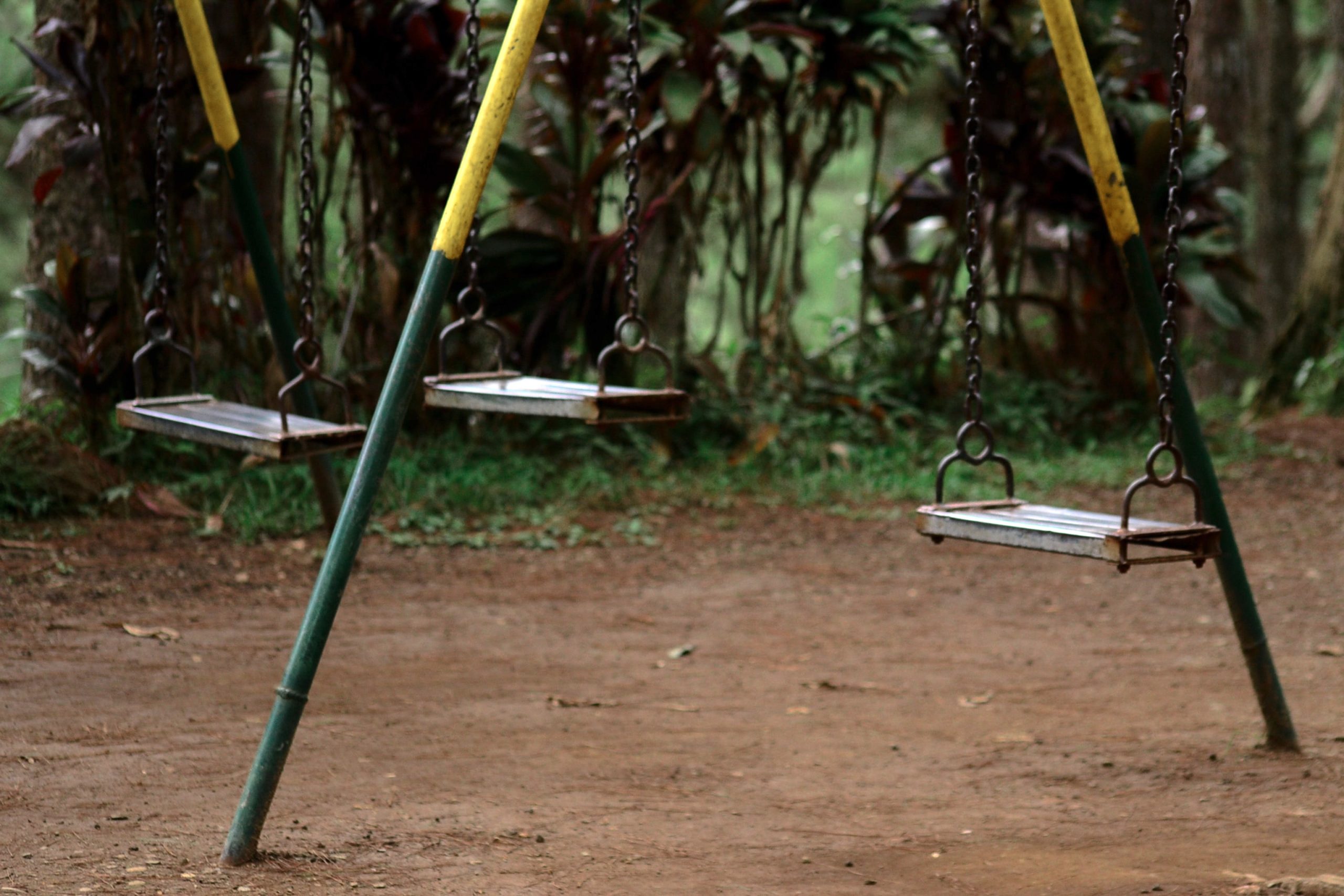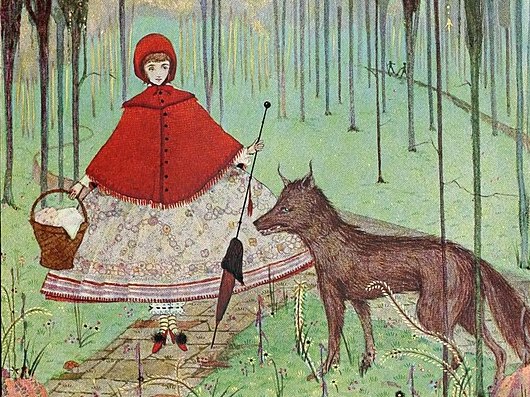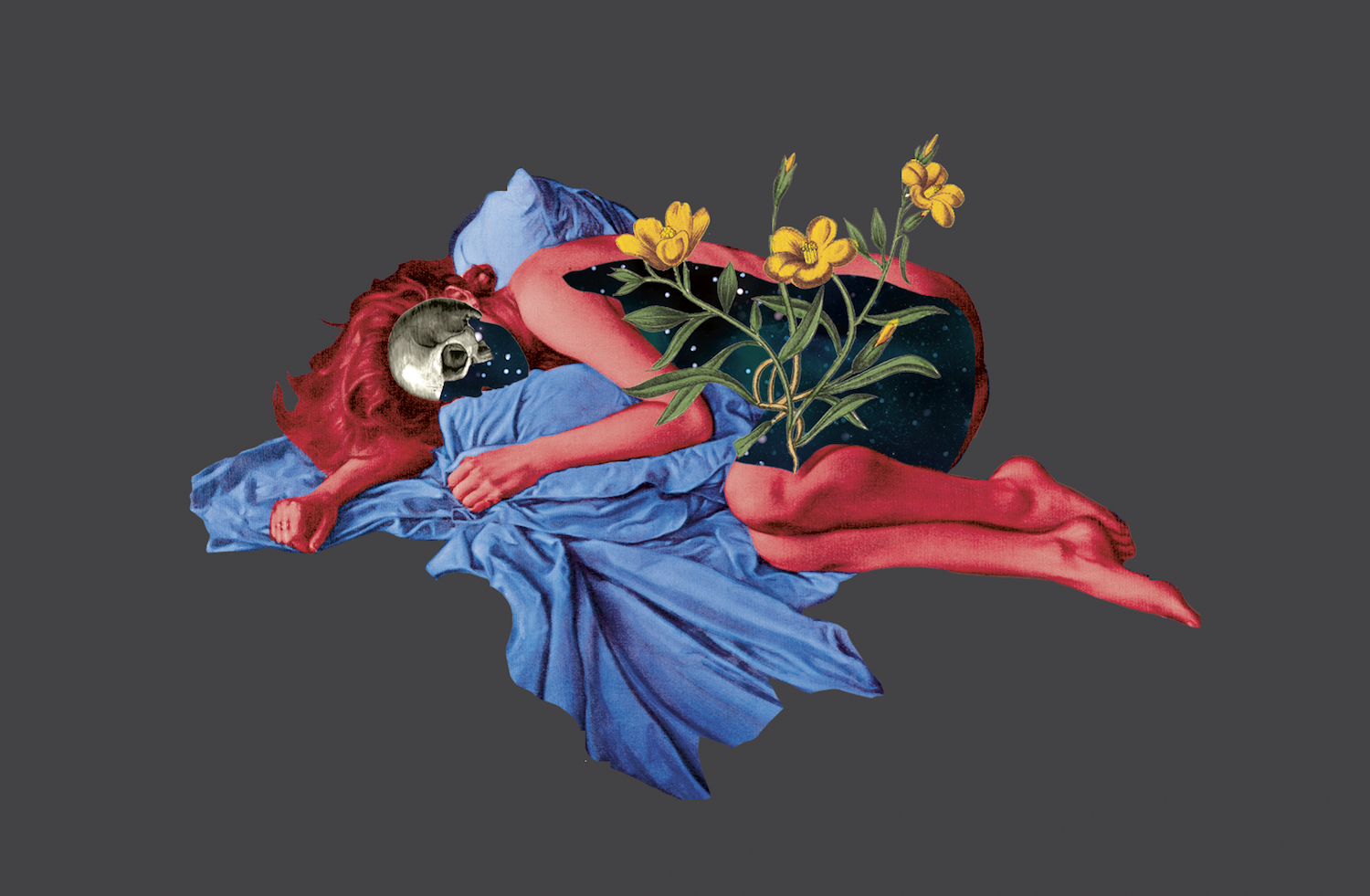Reading Lists
9 Books With Fabulist Worlds That Push Boundaries
David Lawrence Morse recommends stories that defy expectation and challenge our conception of the ordinary

In its origins, the word “fabulous” lacked a positive connotation but simply meant “having to do with fables.” I’m no etymologist, so I don’t know how “fabulous” drifted into its current meanings, but I suspect it has something to do with the concepts that are expressed by similar words like “wonderful” (full of wonders), “marvelous” (related to “marvels”) and awesome (“expressive of awe”). Fables are stories that depict marvels, that narrate supernatural or paranormal events that evoke wonder or awe. Fair enough. But why have we come to use these words with a consistently positive connotation, when the marvels revealed by a fable could easily be ominous or terrifying rather than auspicious?
I was raised in the Southern Baptist church, and while I’m no longer a believer, I grew up hearing stories of the great flood, the burning bush, the plagues of Egypt, the Leviathan that confronts Job, paralyzed with fear. My teachers in the church tried to convert these stories into Disneyfied tales appropriate for children, with an easily comprehensible moral, but no amount of Sunday School sanitizing could eliminate the terror. And so in my debut collection of short stories, The Book of Disbelieving, I try to help reclaim the concept of the “fabulous” in all its complexity—to create worlds where inexplicable, fantastical events might occur, but for the characters who inhabit these worlds (and, hopefully, for the readers who encounter them), there is a mixture of terror and awe—above all, a destabilizing sense of metaphysical bewilderment.
The novels and story collections that I’ve included in this list range in scope, setting, tone, theme, and method, but they all do something similar: create worlds that defy expectation, that challenge our conception of the ordinary, that renew our understanding of the “fabulous.” But in all these authors’ work, the fabulous is not invoked merely for the purposes of sensationalism—as in The Book of Disbelieving, reality is being manipulated or exaggerated for thematic purposes, to explore some element of our shared collective existence that might have otherwise gone misunderstood or unappreciated. Samuel Taylor Coleridge claimed that appreciating a work of art required “the willing suspension of disbelief”; never has suspending one’s disbelief, as in these fables, been so rewarding.
Orange World and Other Stories by Karen Russell
Russell opens this collection with a quote from Ghostly Matters, by Avery Gordon, which could well serve as an epigraph for all fabulous narratives: “We need to know where we live in order to imagine living elsewhere. We need to imagine living elsewhere before we can live there.” That’s the reason fabulist worlds, such as the ones that Russell conjures in Orange World, are so compelling—they illuminate the complexities of our own world while offering a glimpse of compelling—or horrifying—alternatives. Do we want to live in these alternative worlds? Or should we find ways to live with—or improve—our own?
In “The Gondoliers,” the landscape has been overwhelmed with water, navigated by a brave family of gondoliers who transport travelers across this fraught and haunted topography. In the wickedly funny yet weirdly touching “Bog Girl: A Romance,” the protagonist falls in love with a corpse excavated from a bog, bringing her with him to his high school dance. In the most original of these eight stories, “The Tornado Auction,” a farmer—one of the last of his kind—grows tornadoes, raising them “from seed” to mighty whirling cataclysms, barely restrained by the meager structures meant to contain them. Like the best conceits, the story works on multiple levels—first, on the level of narrative, as we follow the protagonist’s doomed efforts to grow one last tornado, the most gorgeously formidable of them all. And then also, of course, at the level of resonant metaphor: what kind of tempests do we grow from seed in our own hearts—and for what purpose?
The City and the City by China Miéville
The City and the City, like Russell’s “The Tornado Auction,” originates with a core speculative conceit that both inspires an engaging plot and teems with the potential for metaphor. Two city-states, Besźel and Ul Qoma, exist in the same geographical space yet are considered to be distinct politically, legally, linguistically, and culturally. Inhabitants of this shared space are born, raised, educated, and indoctrinated as either a citizen of one city or the other; while some spaces within the city homogeneously belong to one city only, other “crosshatched” spaces are simultaneously inhabited by both cities. Inhabitants are trained from birth to recognize subtle differences in architecture and dress to differentiate the two cities; and it is an inviolable law that inhabitants of each city must ignore (or “unsee”) any element of the other—a law enforced by a powerful police entity known as Breach. The plot is comprised of a murder mystery that takes careful detective work—breaching both cities—to solve, but it is the rich evocative imagining of the daily operations of these two co-habitant cites that I found fascinating. The conceit provokes us to think about our own experience in urban environments—who and what do we “see” and who and what do we ignore, and why, and what are the perceived dangers of seeing what may be considered taboo?—while also conjuring more specific geopolitical conflicts, in which two politically and ethnically distinct communities live on top of each other, riven by bitterly ingrained and longstanding ideological differences, such as Jews and Palestinians in Jerusalem.
White Cat, Black Dog by Kelly Link
The latest story collection from author, editor, and publisher Kelly Link, these fables transport readers to a range of eerie fairy tale locales, from a house visited by a sentient mist and a retinue of anthropomorphic animals in “Skinder’s Veil,” to a Nordic underworld governed by a vengeful, ageless witch in “Prince Hat Underground.” In my favorite, “The Girl Who Did Not Know Fear,” Link transforms the swimming pool at a typical airport hotel into a luminous dream-cave in which the protagonist, unable to return to her family, is suspended in a vexed, spectral limbo, until an uncanny encounter on a plane offers revelations about the debilitating nature of sexual jealousy and the bewildering claims that our bodies make upon us.
Parable of the Sower and Parable of the Talents by Octavia Butler
Dystopian novels are a warning to readers of what their own society may one day become. In Butler’s Parable of the Sower and its sequel, Parable of the Talents, set in the US in the 2020s and 2030s, climate change upends civilization, corporations force people into subsistence level dependency or indentured servitude, public institutions like the police and public schools are increasingly privatized, only available to the wealthy, and public trust has disintegrated. A right-wing Christian demagogue named Jarret runs for president and is elected on the slogan “Help us make America great again” (startlingly prescient—Talents was published in 1998), waging a violent campaign against non-Christian faiths. And yet these two books are not your typical dystopian horror-show, for Butler also imagines that such social collapse could create blank-slate conditions in which a new utopian community might be created.
The protagonist, Lauren Oya Olamina, having fled her family’s walled enclave when it is looted, wanders north with fellow refugees and creates a new community, called Earthseed, predicated on the notion (you could call it a faith) that God is change. Butler skillfully manages to both imagine a compelling vision of an alternative community, modeled on many utopian predecessors, while also demonstrating the community’s potential weaknesses and the fascinating but deeply flawed character of its founder. In this way, like Ursula K. LeGuin, Butler creates that rare thing: a depiction of a utopian community that isn’t merely a boring wish list of desirable social reforms (think of influential but tedious novels like Walden Two or Looking Backward) but an intellectually and aesthetically complex work of art.
The Dispossessed by Ursula K. LeGuin
Like Butler’s Parable series, The Dispossessed puts forward a vision of a utopian society that is ideologically compelling but also dramatically interesting. The narrative alternates between two planets: Urras (like Earth) and Anarres (like the Earth’s moon). While Urras is dominated by two nations, one capitalist, the other authoritarian/socialist, Anarres was founded according to anarcho-syndicalist principles, and as such, the centralized state—as well as ownership of private property—have been abolished. The protagonist, a physicist named Shevek, a native of Anarres, was modeled on a friend of LeGuin’s parents—J. Robert Oppenheimer. Shevek is struggling to finish formulating his life’s work, a new theory of time called the Principle of Simultaneity. Thwarted by departmental politics and restrictions on his time in the form of manual labor required of all Odonians (i.e., citizens of Anarres), Shevek travels to Urras, hoping to gain the time and support he needs to complete the Simultaneity, which he believes will benefit all humanity. Having grown disillusioned with the restrictive social mores on Anarres, he finds that life on Urras is worse, characterized by unrestrained competition, greed, and inequality. In the end, he publishes his Principles through a third entity, the Hainish, who help him return to Anarres, where, labeled a traitor, his fate is uncertain.
As with The City and the City, it is the imaginative details of LeGuin’s invented worlds that are so fascinating: she creates on Anarres a living, breathing culture, whose language and mores reflect their political ideology in nuanced ways. Thanks to LeGuin’s comprehensive depiction of Anarres’s anarcho-syndicalist society, we are able to regard it with wonder while analyzing its flaws and virtues.
Children of the New World by Alexander Weinstein
These thirteen dystopian fables all envision one kind of disaster or another in our not-too-distant future, some at the social and political level—entire worlds come undone by ecological collapse. Others at the personal level, as the protagonists struggle to reconcile their all-consuming dependence on technology with their need for human contact, human touch. In the worlds that Weinstein imagines, even experiences as profound as parenthood and transcendence can be manufactured and commodified by technology.
In “Moksha,” the main character travels to Nepal in a desperate search for a particular kind of enlightenment that is facilitated by an advanced video game console banned by the U.S. government, while in the collection’s title story, a married couple raises two virtual reality children only to lose them when their VR account is fatally corrupted by malware. “I’m not deleting my children!” cries the father, but “delete” them he must, and it is a testament to Weinstein’s skill that we deeply feel the loss of these kids, despite the fact that, as the technician reminds us, they’re “just data.” “The Cartographers” achieves a similar effect, describing how a team of tech-savvy entrepreneurs sells fake memories implanted in people’s minds; ultimately, the protagonist must confront the fact that his own cherished memories of his life’s greatest romance are nothing more than artfully constructed terabytes of digital information. “Love scars memories, even if it was never real. When I walk the streets I think: we walked here together, she used to touch my arm like this, and the pain of white emptiness sets in. You can’t get rid of memories; you can only try to ignore them.” Weinstein’s worlds—though composed only of another kind of data in the form of words—are equally hard to ignore.
Klara and the Sun by Kazuo Ishiguro
“Saying Goodbye to Yang,” the first story in Alexander Weinstein’s Children of the New World, imagines a near future where advanced technology has created AI robots available as companions for children. This is the same conceit in Kazuo Ishiguro’s latest novel, Klara and the Sun, where androids known as Artificial Friends (AFs) are commonplace, available for purchase at a range of prices and abilities. The twist is that the novel is written from the point of view of one particular AF, Klara, who, like so many of Ishiguro’s protagonists, is curious, compassionate, naïve, somewhat stilted, and decorous to a fault. Klara is picked out for companionship by a girl named Josie, who, though smart, enthusiastic, and gregarious, is suffering from a prolonged illness that is the result of a common process of genetic engineering (called lifting) that was intended to boost her academic performance and prospects for a career. Solar powered, Klara becomes convinced that the sun has special healing powers, and thus begins a protracted effort, like a propitiate to a god, to persuade the sun to cure Josie’s ailment.
In many respects, Klara and the Sun resembles another of my favorite Ishiguro novels, Never Let Me Go, told from the point of view of a clone created for the purposes of organ harvesting. In each of these tales, Ishiguro adopts the perspective of a sub-altern class of proto-humans that we ourselves have created, exploring our collective preference for social hierarchy and exclusion as well as the individual’s yearning for belonging, while, ultimately, attempting to determine what it means to be human.
The Complete Stories of Leonora Carrington by Leonora Carrington
I’ve saved the wildest imagination for last. Leonora Carrington, the surrealist painter who fled Europe (and an insane asylum) during World War II (she may have escaped via submarine), settling in Mexico, where she continued to devote her life to art and literature and eventually became one of the founders of the Women’s Liberation Movement in the 1970s. Her collected stories, not published until 2017 by Dorothy, a publishing project, were composed in three languages (English, French, and Spanish), many written in her early 20s.
These are stories where talking wild animals wreak havoc on human society, where queens and kings, ensconced in their castles, are no safer from danger than the rest of us, where even aggressive vegetables, animated by hate, get into the mix, and where corpses loom large, possessed of a potent capacity for both terror and balm (as in “How to Start a Pharmaceuticals Business,” where the miniaturized corpse of Joseph Stalin provides a source of magical hairs, the original ingredient in what will become a successful drug useful in the treatment of “childbearing and other convulsions”). Wandering through these worlds are Carringtonesque figures of various ages, who encounter the unexpected with courage, curiosity, and a surprising amount of tact. Two of her finest, most hilarious and most terrifying stories bookend this collection: “The Debutante,” in which a girl refuses to attend her own debutante ball and sends a hyena in her place instead; and “Jemima and the Wolf,” in which a similar protagonist, resisting her overbearing mother’s attempts to turn her into a “normal little girl,” flees her home for the forest in pursuit of a mysterious figure—who may be a man or may be a wolf. Carrington herself (as quoted in Kathryn Davis’s terrific introduction) provides an excellent epigraph to her work: “Even though you won’t believe me / my story is beautiful / And the serpent that sang it / Sang it from out of the well.” For more on Carrington’s life, writing, and art, see Leonora Carrington: Surrealism, Alchemy and Art by Susan Aberth.









